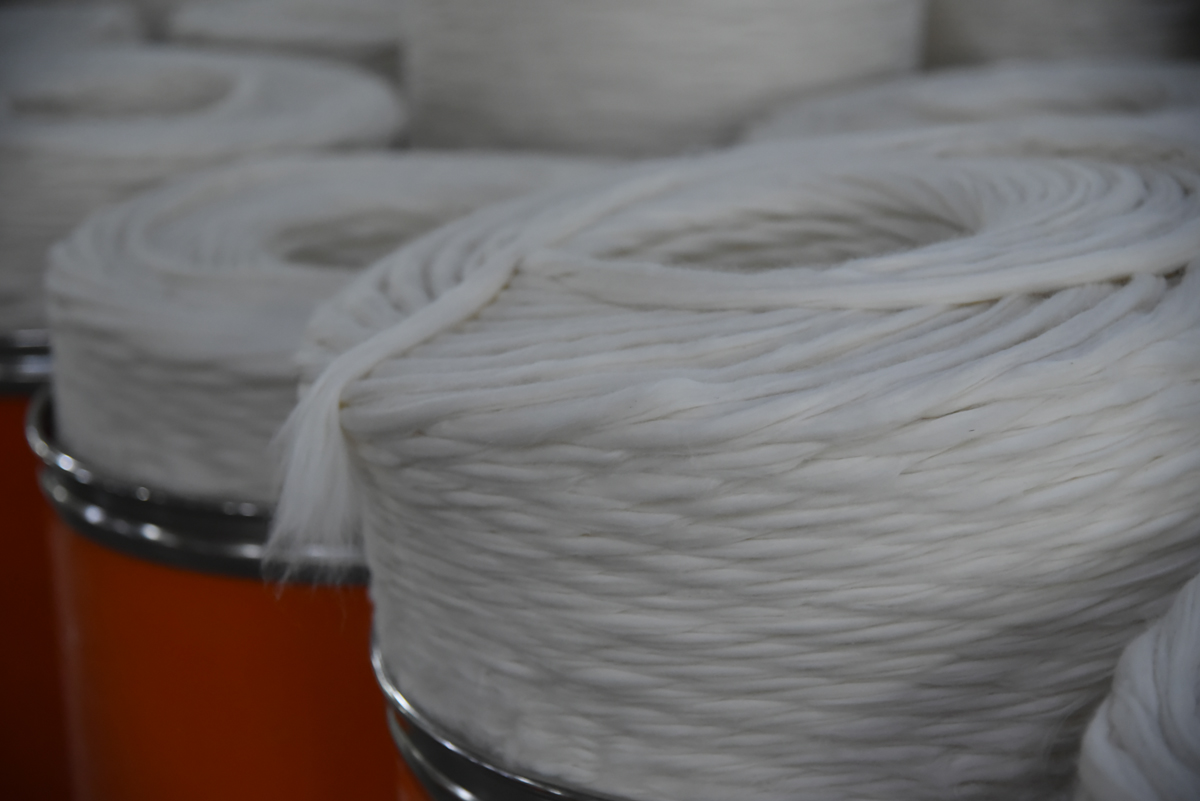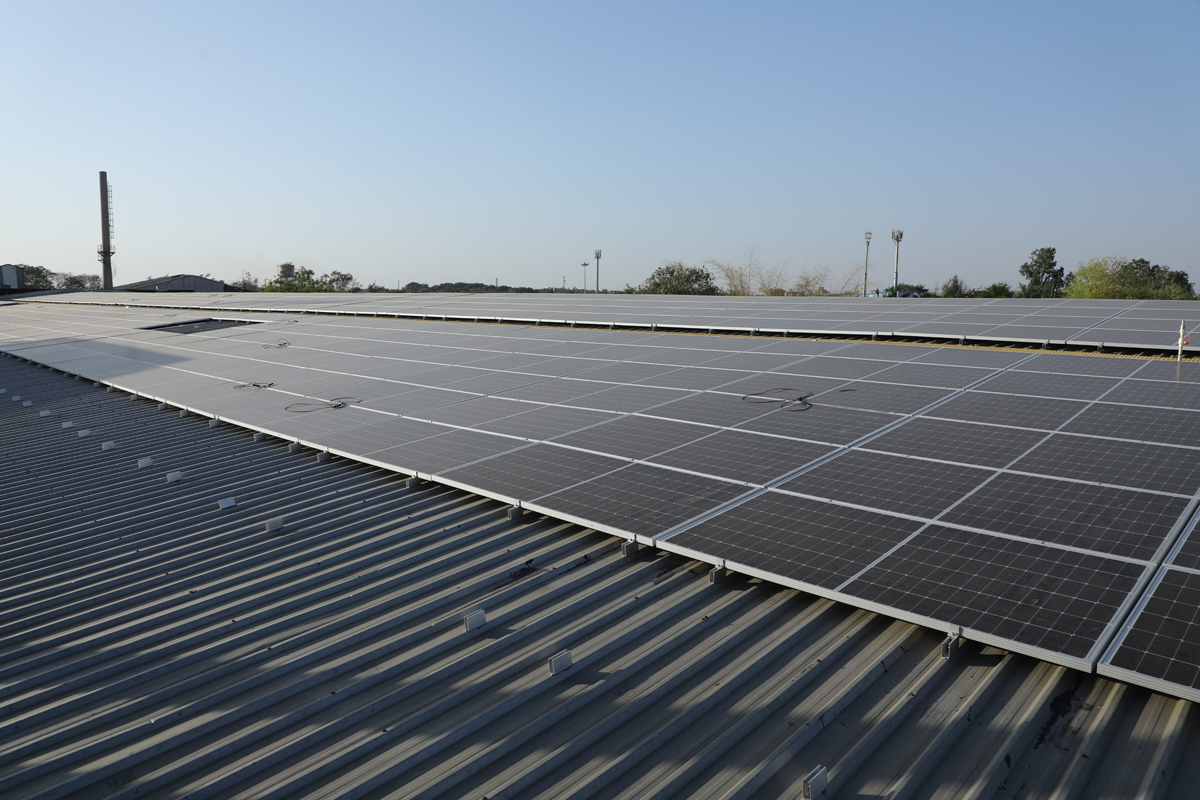
Pratibha Syntex Ltd. has reduced carbon emissions in the factory by 11% and curtailed 100% consumption of fresh water in processes. The company has the target to reduce 80% GHG emissions from scope 1 and scope 2 by 2025.
The fashion industry is responsible for 10 % of annual global carbon emissions. At this pace, the fashion industry’s greenhouse gas emissions will surge more than 50 % by 2030. United Nations Environment Programme report outlines that every year the fashion industry uses 93 billion cubic meters of water — enough to meet the consumption needs of five million people. Around 20 % of wastewater worldwide comes from fabric dyeing and treatment. Scientific American states that we are losing around 30 soccer fields of soil every minute, mostly due to intensive irresponsible farming. The world has soil for the next 60 years only.
It is a collaborative responsibility of the industries to co-create an environment so that future generations inherit a world full of happiness, said Shreyaskar Chaudhary, MD, Pratibha Syntex Ltd.
In alignment with sustainable development goals, Shreyaskar had the vision to make the farm-to-factory processes in such a fashion that it can have minimum impact on environment. As a more than responsible textiles manufacturer, Shreyaskar cultivated the business strategy around sustainability.
As stated by Mukesh Matta, VP Quality & ESG, Pratibha has been able to reduce carbon emissions at the factory level by 11% from 2016 to 2021 by taking a slew of measures.
To increase the share of renewable energy, 2.4 MW rooftop solar power plant has been installed. The share of renewable energy is 37% of total electricity consumption at Pratibha. The solar power plant will be expanded to 4.9 MW by 2025.
To reduce consumption of fossil fuels, the boiler at one of the factories has been converted from Coal to Bio Mass Briquette ,thus reducing consumption of 180000 litres of Diesel per year.
Machinery upgradation has been executed. Old machines have been replaced with more energy-efficient machines. The annual saving in energy is equivalent to one year of electricity needed for 3500 families.
Our goal is to reduce scope 1 and scope 2 emissions by 80% from year 2020 to 2025 . This will be achieved by further expansion of solar power capacity and conversion to biomass briquette boilers in main plant, added Matta.
Resolute to create synergy with nature, Pratibha Syntex Ltd has been recycling 100% of water and infusing 93% of water back into the processes. The chemical effluent treatment plant has been converted into a biological process. This has reduced the waste by 86%.

Appalled by the ill effects of conventional farming, Shreyaskar Chaudhary, established Vasudha Swaraj in 1999 to promote organic and regenerative farming, in rural regions of Madhya Pradesh and Rajasthan. The organic journey commenced with 500 farmers and is now a family of 27500 farmers cultivating 100 thousand acres of land, said Avinash Karmarkar, VP, Vasudha Swaraj Pvt. Ltd.
“In the entire supply chain of textiles, the fiber production phase emits the most GHGs. To reduce the GHG emission in agriculture, we have undertaken many initiatives like sensitizing the associated farmers to take up regenerative and organic farming for saving soil, water, animal husbandry and social fairness. To increase carbon sequestration, we have been promoting bio-inputs, multi-cropping, minimum tillage, and less use of water in farming. We have also initiated harnessing biogas in rural regions,” Karmarkar added.
Promote use of Bio Inputs: Vasudha Swaraj has been spreading an organic wave in rural regions of Madhya Pradesh and Rajasthan. Discouraging the use of chemical fertilizers, the company has been sensitizing farmers to adopt organic practices. To promote organic farming, research has been undertaken to develop organic inputs. Many organic inputs have been developed as a result to the indept research. The bio inputs have been validated under NOP and NPOP standards. With the use of bio-inputs, the usage of synthetic fertilizer and agri-chemicals has reduced substantially, which eventually has reduced carbon emissions. Additionally, many of the changes are implemented in agronomy practices to reduce carbon emissions. The application of farm inputs is now being executed before sowing so there is minimum carbon emission.
Bio-Resource Centre: To scale up the usage of bio inputs and reduce the cost of cultivation, Vasudha Swaraj has established three bio-resource centers. The bio inputs are developed at local bio-resource centres using locally available resources like soybean and plant leaves and sold also locally. This practice augurs well for all. Climate, soil and farmer. While it is healthy for the soil, the carbon emission on transportation of bio inputs reduces substantially and the cost of cultivation also gets curtailed by 50%.
Multi-cropping: Vasudha Swaraj has been promoting multi-cropping. With this the soil remains covered. This practice retains the carbon content of the soil and checks carbon emissions from the soil. Around 1500 Farmers have adopted multi-cropping in their farms.
Nursery : A nursery having the capacity to develop 50,000 samplings a year is established. With this nursery 5 lac plantation has been executed in bunds of various farms. Bund plantation checks soil erosion. As per the research, it is found that one acre of land gets eroded if bund plantation is not done. The bund plantation also keeps the micro climatic condition of the farm intact. Inspired by training session from Vasudha, a number of farmers have adopted the strategy and put plantation across the bunds.
Seed production: Vasudha Swaraj has undertaken research for producing non- GM cotton seeds and imparted training to the farmers to make their own seeds at their own farms. The locally produced seeds have natural resistance to pest. This increases production for the farmer. Since the seeds are made locally, it reduces carbon emissions in the transportation of the seeds.

Minimum Tillage: Vasudha Swaraj is promoting minimum tillage practice. This keeps the carbon dynamics of the soil intact and avoids carbon emissions.
Water Conservation: Alternate row irrigation is the way to conserve water and keep the carbon in the soil.
Renewable energy: With an intent to recycle the solid waste of cattle, biogas plants have been developed at around 50 households in Petlawad region. This is a win-win situation for one and all. While it utilizes solid waste, generates cooking gas and manure and stops the burning of wooden logs, which otherwise would be used to be burnt for cooking purposes. In Motapura village around 70% of households have adopted biogas plants.